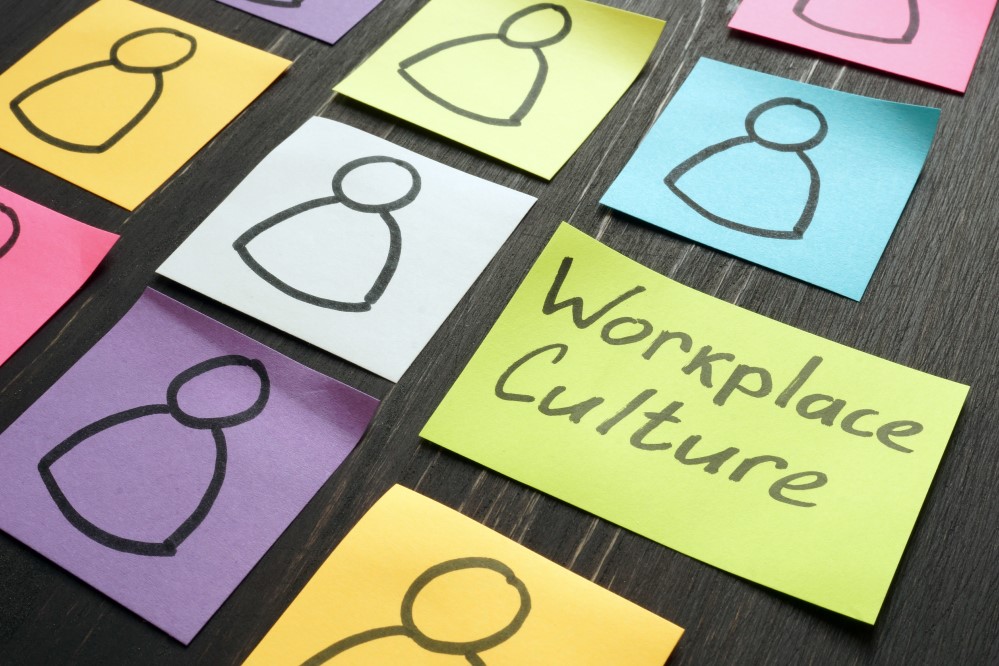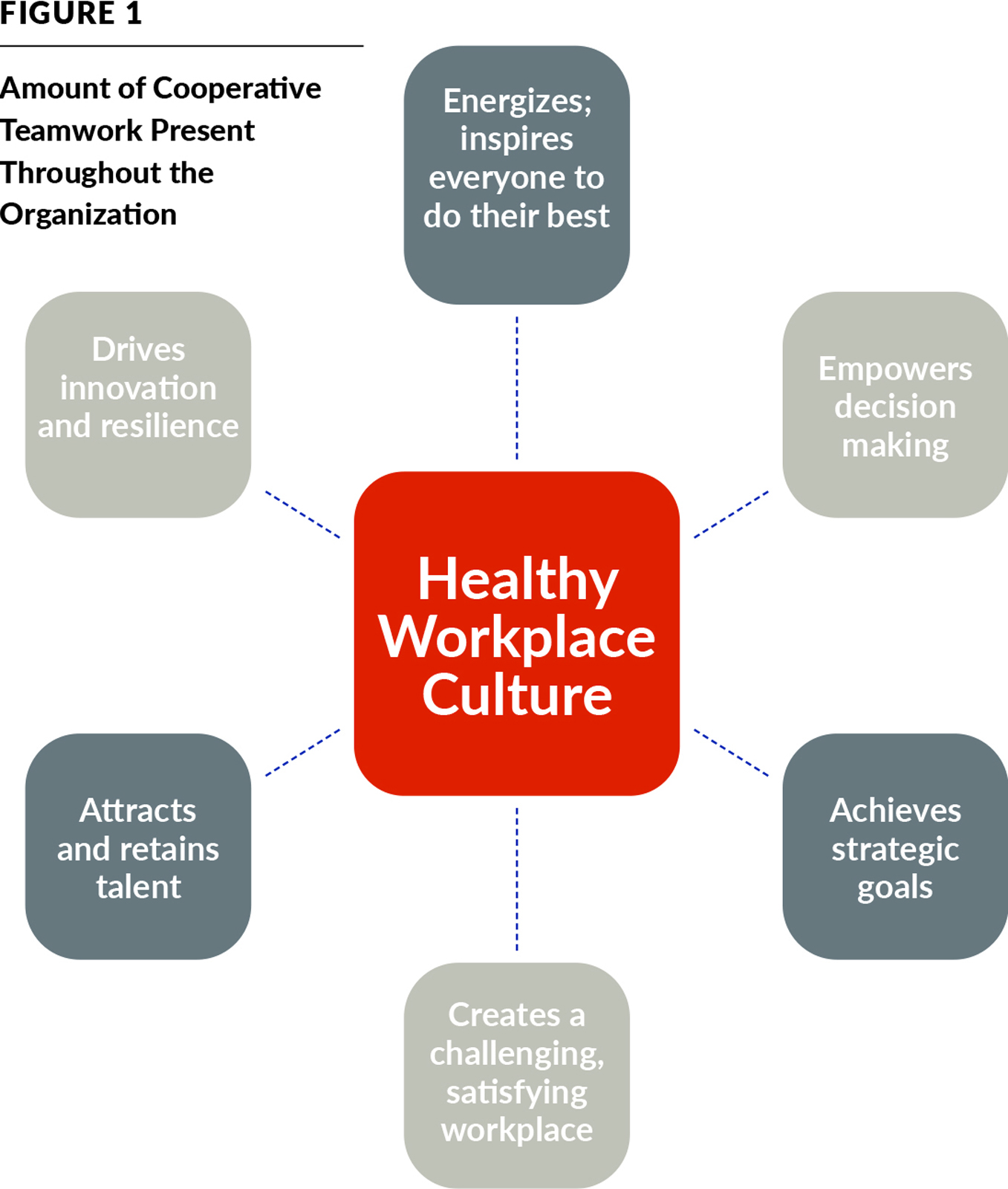
Conventional wisdom in government has been that the key to improving organizational effectiveness is the result of adding more resources—employees, funding, equipment, and technology—but that’s been proven time and time again not to be accurate.
One of the most effective means by which to achieve a higher level of organizational performance is to create and sustain a healthy workplace culture where people can excel and pursue their potential. The role of culture is similar to oil in an engine—it’s what makes everything else work more smoothly, efficiently, and powerfully.
Culture matters. It matters at work as much as in your community. The science shows that employees want to be trusted and to be held accountable to one another because it makes work challenging and enjoyable and has a direct impact on the organization’s level of performance.
It’s practically impossible to name even a single successful organization, one that is a recognized leader in its field of endeavor, that does not have a distinctive, readily identifiable organizational culture. Most scholars and practitioners now recognize that the culture of an organization has a powerful effect on its performance and long-term effectiveness. In short, while a healthy workplace culture does not guarantee high performance, it’s almost impossible to achieve without it.
Culture is the underlying fabric that holds an organization together. When the fabric is strong, groups can endure major challenges and thrive during better times. If the fabric is tattered, groups may manage to get by, but employees, projects, and customers fall through the gaps. Despite the enormous influence of an organization’s culture on effectiveness and success, culture is often dismissed as too fluffy, esoteric, or abstract to have much impact. In cases where the cultural fabric is falling apart, groups and organizations become so dysfunctional that they are a detriment to the health and well-being of employees.
The good thing about culture is that it provides coherence and continuity. The bad thing about culture is that it can anchor an organization in past practices that no longer fit a changing world. Unhealthy cultures drain employees and affect their motivation and contribution. A healthy culture should replenish employees’ energy, not drain it. What’s holding your organization back isn’t just outside your doors, but inside your walls: the way your people feel, think, behave, and relate to one another. In other words, the way they work together.
The attitude toward culture has started to evolve. Forward-looking leaders are no longer passive on this issue and are more focused on understanding the culture of their organizations. By understanding organizational culture, its symbols and hidden meanings, its values, and its underlying assumptions, leaders can change culture and, in so doing, change the behavior and ultimately the performance of individual employees and therefore, their organization.
In brief, culture is the predominant attitudes, language, and behavior of the organization:
• Attitudes are the way people think and feel that affect behavior.
• Language is the words people us to describe their thoughts and feelings.
• Behavior is the way people act.
Cultures are important and powerful because they determine what your organization is capable of accomplishing. Figure 1 lists the benefits associated with a healthy workplace culture.

Connection Culture
Based on research of organizations of various sizes in all sectors, leaders and employees need to be aware of the three types of culture that exist: control, indifference, and connection. In a culture of control, most employees feel controlled by one or more of the following types: autocratic leaders, micromanagement, too many rules, or bureaucracy. A culture of control breeds an environment in which people fear making mistakes and taking risks. It is stifling—undermining innovation because people are afraid to speak up. Employees may feel left out, micromanaged, unsafe, hyper-criticized, or helpless. The second is a culture of indifference, in which most employees feel that the people they work for don’t care about them and view employees merely as a means to an end. Both cultures of control and indifference make people feel unsupported and lonely.
Organizations that have sustainable high performance will have common elements to their culture that enable them to be their best. Although the tasks will differ depending on the industry, when it comes to the relational aspects, there is a best culture: a culture that has a high degree of connection. In a connection culture, most people describe feeling connected to their supervisor, their colleagues, their work, the organization’s leaders, and the people the organization services. As author Michael Lee Stallard shares in his book, Connection Culture, when people feel these connections, they thrive individually and collectively.
A connection culture is created when leaders communicate an inspiring vision, value people, and give them a voice to express their ideas and opinions. An easy way to remember this is Vision + Value + Voice = Connection. A connection culture provides several benefits to organizational performance, that taken together add up to a power source of high performance and organizational success.
Vision exists in a culture when everyone is motivated by the mission, united by the values, and proud of the organization.
For example, employees offer the following statements:
• “We’re creating something new or doing something bigger than ourselves.”
• “We create something of lasting value.”
• “We have a clear strategy and direction with a shared mission and goals.”
• “I can make a difference in my role.”
• “We have values I care about and that we live up to.”
Value exists in a culture when everyone understands the needs of people, appreciates their positive, unique contributions, and helps them achieve their potential.
Sample statements include:
• “There is mutual respect and leaders care about people first.”
• “Leaders do the right thing. They are credible.”
• “We have discretion and are trusted and empowered to make decisions.”
• “My role fits my interest and strengths.”
• “My supervisor cares about me as a person and helps me learn, develop, and grow.”
• “We enjoy our work and our coworkers.”
Voice exists in a culture when everyone seeks the ideas of others, share their ideas and opinions honestly, and safeguards relationships.
• “We see that we are making progress in our work.”
• “Our work is done with excellence. We have high standards.”
• “We deliver positive results.”
• “We hire and promote talented people.”
• “We celebrate milestones.”
If employees don’t know what to do, they do what they know. Shaping culture takes insight, persistence, and courage from leaders at multiple levels. Beyond mindset, the role of skillset is crucial. Training on behaviors is an important part of any culture change effort. When doing so, it’s important to understand the behaviors needed to support the right type of culture. While leaders serving as teachers is one of the most effective ways to reinforce behaviors, successful culture change relies on overall training across the organization. According to research by Kevin Oakes in his book, Culture Renovation, two-thirds of organizations that have successfully changed their culture provided training on the desired behaviors for employees at all levels so they can model these behaviors in their daily work.
Each organization’s culture already contains the components it needs to fuel successful transformation. Leaders can effect a lasting positive culture by encouraging behaviors that promote those elements. You don’t need to replace your old culture; you need to find the aspects of it that can help you move forward.
Creating and maintaining a healthy workplace culture is painstaking work. It requires focus and commitment throughout an organization. Healthy cultures lift people up, expand the capacity of the workforce to execute new challenges, and overall enhance the organization’s performance.
Read the next edition of Career Track in the September issue, in which I identify the steps you can take to transition (and possibly transform) your workplace culture from the prevailing to the preferred.

PATRICK IBARRA and his consulting firm, the Mejorando Group, are passionate about unleashing human potential (patrick@gettingbetterallthetime.com).
New, Reduced Membership Dues
A new, reduced dues rate is available for CAOs/ACAOs, along with additional discounts for those in smaller communities, has been implemented. Learn more and be sure to join or renew today!
